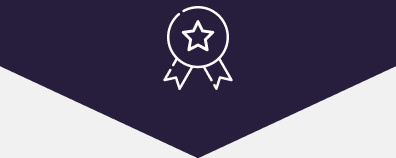What are business models?
Posted on: May 24, 2022
A business model is a template of how a business will make money and turn a profit by using a particular system. The most successful business model for a brand can be selected by defining its products or services, understanding who the audience and key customers are, and detailing the costs and overheads that will be encountered on the route to profit.
Business model construction and modification is also called business model innovation and forms a part of business strategy.
Different types of business models
There are many business models which support companies and start-ups to realise their business plan. Some claim that there are up to 30 different business models to choose from, but there are some business model examples which are more common and successful than others.
Retailer model
The retailer model is one of the most traditional models and usually involves bricks-and-mortar shops with an online presence such as department store, John Lewis, or home store, IKEA. Goods are sourced and purchased from distributors and the cost price is marked up to cover expenses and earn a profit when sold to customers. Purely online e-commerce stores such as Amazon and ASOS also follow this model where the brand is the last link in the supply chain.
Manufacturer model
Another traditional model, this is when a manufacturer sources raw materials to create their own product. Very few businesses nowadays are the sole manufacturer of their own product. Companies may have unique designs or concepts but they tend to utilise the skills and industry contacts of a factory that is already in operation and produces items for different brands. Crockett & Jones in Northampton is a brand that has manufactured shoes in its own factory since 1879.
Razor blades model
This works on the premise that customers buy a high-margin item which is the gateway to buying accessories. This offers the business a lower margin of profit on each additional item but retains the customer. Apple offers an example of this in selling MacBooks, iPads, and iPhones which lead to purchases of extended warranty with AppleCare, media on iTunes, and storage space on iCloud, as well as accessories such as protective cases. The original blade model is actually based on the reverse concept: selling a basic product like a reusable razor body at a fairly low price point but raising the price on replacement blades.
Freemium model
This model has gained traction due to the increase in Software-as-a-Service (SaaS) businesses. The software company offers a tool or a platform freely, however premium features are only available through subscription. Spotify is an example of a brand which has successfully harnessed the freemium business model.
Subscription model
In the subscription business model, the customer pays a subscription fee monthly, quarterly, or annually that allows them ongoing access to a service or to receive products on a regular basis. Digital brands that use this model include Netflix for streaming movies or series and the Calm mindfulness app which includes meditation sessions and sleep stories. Brands that deliver physical items include HelloFresh meal-kits and Birchbox beauty boxes.
Bundling model
The bundling business model can be observed in brands which offer a collection of items that when bundled have lower prices individually than if they were sold on their own. McDonald’s meal deals are an example of bundling as are many of the Today’s Special Value offers on the QVC shopping channel.
Franchise model
A franchise is an established business with branches that can be purchased by a franchisee. The franchisee gets help with financing, marketing, and other business operations from the owner of the business. In return, the franchisee pays a percentage of the profits to the parent company. Starbucks and Prêt a Manger are examples of businesses which rely on franchising.
One-for-one model
This is actually a social entrepreneurship model where in buying one product, the business provides one for someone who lives in poverty. It is a model largely credited to TOMS shoes, however the concept can perhaps be traced back to caffè sospeso. In Naples, Italy, a caffè sospeso is when you purchase two coffees when you only need one, leaving payment for someone else to enjoy a coffee if they can’t afford one. The habit emerged during the hardships of World War II.
Crowdsourcing model
The crowdsourcing of information from stakeholders who are members of the public rather than members of staff is demonstrated by sites such as Wikipedia and Google Maps. Indiegogo and Kickstarter are examples of crowdsourcing companies that act as a middleman, connecting entrepreneurs to customers who would like to be part of the funding stage for new businesses or product ideas.
Choosing the right business model
Getting clear on the business offering and how it will be marketed can help with choosing the model that’s best suited to the offering as will defining the value proposition and target market. Entrepreneurs should understand their cost structure and the revenue streams open to them, because no matter how great a business idea is in theory, this will help to establish a realistic approach to setting up a business in practice.
How technology has changed business
Today, almost all businesses rely on an online presence, whether simply as a website that shares information, a social media profile, an app, or as a fully-fledged online store. The pandemic led to many businesses investing more in online reach and sales if they hadn’t already, while some businesses were forced to close bricks-and-mortar stores.
How do business models evolve? Successful business models have remained fairly constant even with added layers of digitisation. What changes is how businesses interact and connect with their customer base, and technology has altered this significantly. Small businesses that are early adopters of tech-based solutions can go on to dominate the market because they have a competitive advantage.
New business models arise when the means to doing business change, but this may only occur once in a generation and is based upon consumer trends. For example, Airbnb and Uber use a business model which is variously referred to as an aggregator or a multi-sided platform business model. Their models are based on the sharing economy sometimes called the peer to peer (P2P) economy. A useful tool for developing new business models is the business model canvas.
Immerse yourself in the business ecosystem with an MBA
Even the most basic product requires the adoption of a robust business model and market strategy for value creation. Find out more about business models, revenue models, the tools to successful entrepreneurship, and launching new products with an online MBA from Keele University today.
